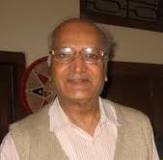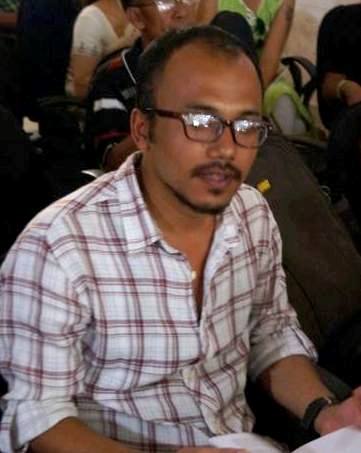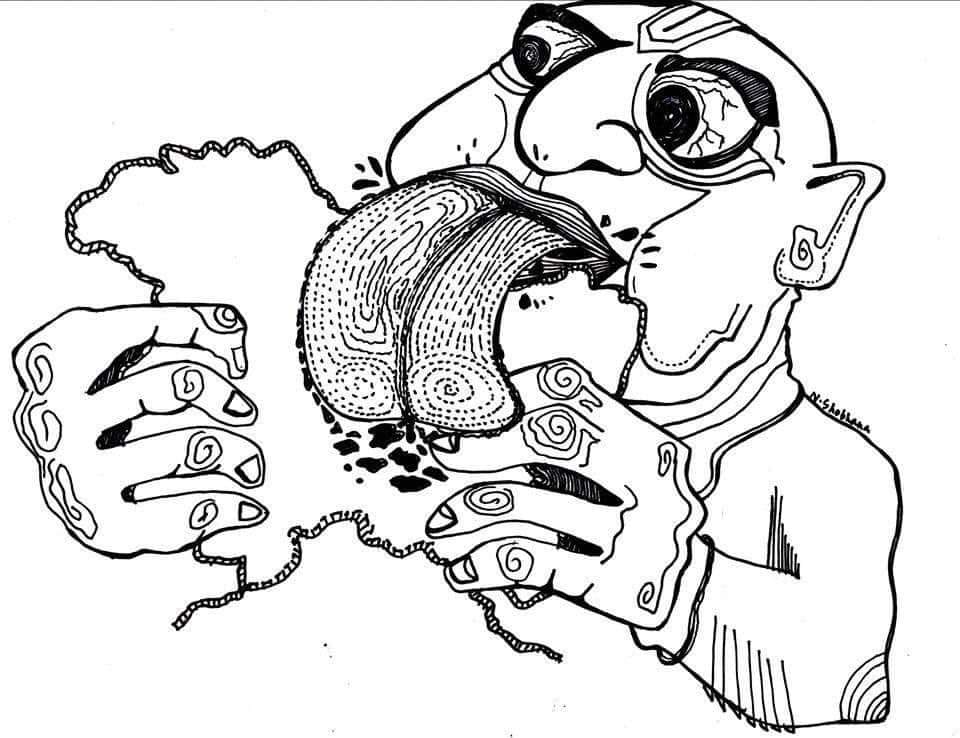Walter Fernandes
 The middle class was roused to action by the rape of a 23-year old paramedical student in Delhi on 16th December 2012. Her death two weeks later on 29th December ended her trauma but left many questions unanswered. She died of multiple organ failure – physical and social. Her physical organs failed so did the social organs. The police failed, the politician failed, the State failed, her society failed, her culture failed, you and I failed. This short piece is an effort to analyse that failure and ask whether there is a way out of it.
The middle class was roused to action by the rape of a 23-year old paramedical student in Delhi on 16th December 2012. Her death two weeks later on 29th December ended her trauma but left many questions unanswered. She died of multiple organ failure – physical and social. Her physical organs failed so did the social organs. The police failed, the politician failed, the State failed, her society failed, her culture failed, you and I failed. This short piece is an effort to analyse that failure and ask whether there is a way out of it.
The incident got the demonstrators to make demands such as death penalty and castration in public for rape. One can understand such emotional outbursts against this heinous crime of some drunken men. However, at this stage one needs to take a distance from the crime and ask oneself whether in this case too one is reacting to a single incident without taking cognizance of the malaise that leads to such deeds. The Delhi rape became a high profile case because it happened in the national capital. That in no way reduces the immensity of the crime. But for change to occur in favour of women or any subaltern group, one has to go beyond this single case and deal with its causes or the social failures. One has to remember that this case received publicity because it happened in the capital but it is not an exception. Many more cases are hushed up regularly or are not reported.
According to police records during 2011 India witnessed 228,650 crimes against women, 24,206 of them of rape and 35,565 of kidnapping and abduction. They are reported cases. A much bigger number goes unreported. Firstly because of the stigma attached to rape many victims are advised not to report the case in order to protect the honour of women or of the family. Secondly, studies indicate that around 90 percent of rapes are committed by persons known to the victim, many of them from the family. In these cases there is pressure on the family not to speak out. Thirdly, a large number of victims belong to voiceless communities. For example, in an article in Counter-Currents on December 29, 2012, Cynthia Stephen quotes a dalit girl from a village in Tamil Nadu as saying “there is no girl in our lane who has not been coerced or raped by the dominant caste men when they go to the fields to fetch water or for work.” Men from the dominant castes threaten dalit girls with dire consequences if they dare complain to the police. So these cases go unreported.
Finally, often the police add to the trauma of the victim. For example, an 18 year old girl in Badhshapur village in Patiala committed suicide on 26th December, 44 days after being raped by three men. Her mother reports that the police refused to register her complaint. When she went to complain to the police they humiliated the girl with lewd remarks and questions such as “how did they touch your breast? Did they open their jeans or coat first? How many times did they rape you?” The criminals were arrested only after her suicide probably because of the furore created by the Delhi rape. Or take the case of the police officer in Haryana who was elevated to the highest rank though a budding tennis star had accused him of raping her. She too committed suicide because of the harassment she was subjected to. The officer was given a six month jail sentence some years after his retirement. Little wonder then that the conviction rate for rapes has gone down from 47 percent in 1971 to 26 percent in 2001. According to the Press Trust of India (PTI), December 30, 2012, there was one conviction against 635 reported rapes in Delhi during 2012.
One needs, therefore, to ask whether legal changes alone, even death sentence, can solve this problem. New laws and police reforms are certainly needed. But they will not solve the problem because these and other crimes result from attitudes and values ingrained in our minds. The middle class stages demonstrations in high profile cases and ignores the rest. Also the national media ignore them. For example, on 23rd December 2005 some university students got into a railway compartment at Kokrajhar in Assam not knowing that it was occupied by the armed police coming from Haryana. These men who are paid to protect the citizens locked the doors of the compartment in order to molest them. The Bodo Student Union got wind of it and stopped the train in the next station and tried to free the students. The police opened fire and killed four persons from the “unruly mob”. The perpetrators of this crime have gone scot free and the incident did not become national news. Even in Assam it remained a Bodo women’s issue, not of all women. According to a PTI report of 31st December, 2012, seventeen dalit women were raped in Haryana during November. That did not become national news.
In other words, while agreeing that crimes against women are a result of the strong patriarchal values of our society one has to realise that they are conditioned by ethnic and caste attitudes too. Many victims have also to deal with a false sense of patriotism in some cases of rape by the security forces. They are told not to report the case in order to protect their honour. The victim’s honour does not matter. Even some laws like the Armed Forces Special Powers Act 1958 protect such criminals in uniform. While agreeing on the need for police and legal reforms this is what gets one to ask whether new laws, even death penalty, can prevent such crimes. The problem lies in the social system too. Its cultural roots are visible in actions such as a few lakh female foetuses aborted every year because women are considered a burden. If all rapists were to be hanged, the victims would have to lose some of their family members because many perpetrators of these crimes are known to them.
Moreover, by accepting the value of male superiority most women too ensure that many abuses remain a secret in order to “protect the girl’s or family honour”. Or take the case of the tribal customary laws in the North East that give all social power to men alone. The male leaders refuse to change the laws and share their power with women. For example, Nagaland has not been able to hold elections to the municipal councils because of the tribal leaders’ opposition to 33 percent reservations for women. They claim that their customary laws do not allow women to have political power. So elections cannot be held without abandoning the reservations. It shows, as Harsh Sadani of Men Against Violence and Abuse says, men who are part of the problem should become participants in the deconstruction of patriarchy (quoted by Smriti Kak Ramachandran, The Hindu, December 21, 2012). But also women who accept caste, class and patriarchal values have to change.
If legal changes alone were to suffice, dowry, child labour, caste-based discrimination and corruption should have disappeared from India some decades ago because they have been banned by law. That has not happened because no law can become effective without a social infrastructure to support it. Laws cannot be implemented as long as the attitudes that give birth to the abuses remain unchanged. To women’s status should be added caste and ethnic attitudes. They too have to change among men as well among women. Without that change urban women may attain equality but dalit, tribal and many other subaltern women will see their status deteriorating. Instead of moving towards such equality, today one sees the system commercialising women in the name of liberalisation – in the commercials, the IPL cheer leaders and elsewhere.
Also the legal system is conditioned by social pressures. According to a news item in the Indian Express, 1st January 2013, the Union Home Minister introduced the Criminal Law (Amendment) Bill 2012 in the Lok Sabha on December 4, 2012. Its definition of crime went beyond rape to include many more forms of violence against women. But the political parties were preoccupied with the debate on FDI and none paid attention to this bill. Only when the Delhi rape became an issue they made new political noises to suit the mood.
The middle class that leads the demonstrations against rape, corruption and other abuses does not seem to realise this social reality. The temptation of this class is to take up one event at a time in isolation and ignore the social attitudes and systems that cause it. For example, this class rightly took up political corruption as a cause to fight against but very few of them went beyond the political class to ask whether the hands of those who protested are clean. This class protested rightly against the unjust arrest and jailing of Dr Binayak Sen but very few of them questioned the Sedition Act under which he was jailed or the middle class consumer needs for which the tribals in Chhattisgarh are displaced. Their impoverishment resulting from their dispossession is at the root of the Maoist rebellion in Central India but their voice is not heard in these protests.
One needs to ensure that also the issue of rape does not end with one case. The gender, class and caste attitudes that cause such abuses have to be tackled. One has certainly to fault the politician and the police departments but one cannot stop at it or at new laws. Without change of social attitudes new laws can only give one peace of mind but cannot solve the problem. One has also to look inwards and examine the social and cultural values that are behind such crimes. If the Delhi rape case can lead to such introspection, the unnamed young woman will not have laid down her life in vain.
~~~
Dr Walter Fernandes, former director of North Eastern Social Research Centre, Guwahati is at present Senior Fellow in the same institution.










